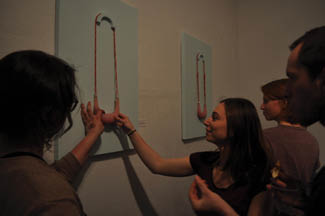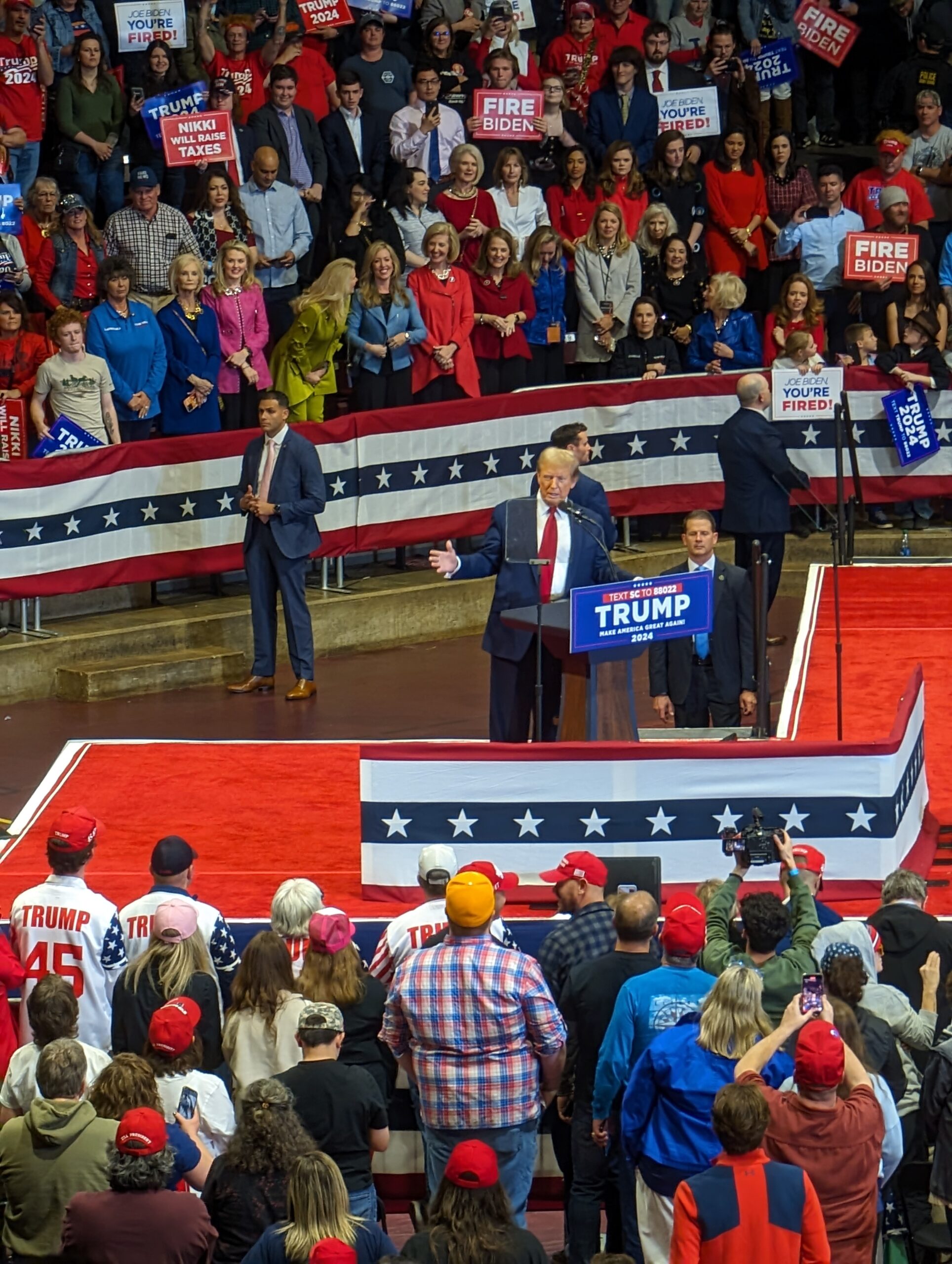Winthrop student shows off her artwork centered around plastic
Plastic has been used as a media for art throughout the years, but Winthrop Fine Arts student, Tina Hinojosa, decided to center her piece around plastic consumption in the environment.
“I like working with recycled materials in general because it allows me to take these items out of the waste drain. With this work, however, I really wanted to reach beyond ‘okay I see some cute spoons and I’m gonna make some earrings with them,’” Hinojosa said.
She said that her exhibit allowed her to go beyond her usual work with recycled materials, allowing her to dive further into the subject matter of plastic.
Her exhibit featured a short video discussing the way plastic enters the environment and how it is consumed by animals, oftentimes leading to their death. Hinojosa said that, upon researching how she could use plastic as an art form, she found this video and was inspired.
“I was touched by this video and thought ‘what a wonderful empathy building material that would be,’” Hinojosa said.
She then contacted the marine biologist featured in the film, Dr. Jennifer Lavers, who sent her the pieces found inside a sea bird’s stomach shown in the video at the beginning of the art talk. Hinojosa was able to display these pieces as well as a handwritten note from Lavers at her exhibit.
The smallest pieces of plastic sent by Lavers were used to make a Kaleidoscope, which was also on display at the exhibit.
Hinojosa said that her own reaction to these materials and work with Dr. Lavers allowed for her to truly appreciate the meaning behind these small pieces of plastic. They decided it would be best to leave them on a table for people to touch and get a better understanding of the message behind this exhibit.
“The work became about my reaction to having this experience with this material and with this doctor. So, I created these hollow structures from hollow casts made of PDMS silicone that were then casted to a plaster mold which I filled with different types of plastic,” Hinojosa said.
The main focus of this exhibit was the different casts around the room which all contained multiple pieces of plastic. The centerpiece on the back wall contained Hinojosa’s ideal world where there is no plastic.
The exhibit was interactive and allowed for people to remove the pieces from the wall and feel the plastic within the molds to try and guess what it was. They were also allowed to hang these from their necks by the strings to get a better understanding of the issue presented.
According to Hinojosa, this exhibit and her work with plastic as a consumption material has caused her think of consumption not only in the way we speak of food, but also from the perspectives of consumer consumption and the consumption of plastic items.
Hinojosa said that this project has affected her viewpoint and outlook on life, as she has become very self-conscious when addressing her plastic consumption.
“If you ever really want to think about your studio practice, do some research on plastic because everything I do now I have to stop and think, ‘Is this something I’m doing to hurt something else?’ and it has made me very aware,” Hinojosa said.




